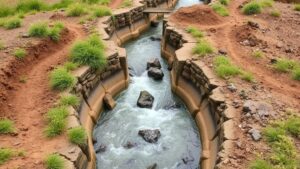The History of Pick and Chisel Mining in the Mediterranean Region
The History of Pick and Chisel Mining in the Mediterranean Region
The Mediterranean region, known for its rich cultural and historical significance, has played a vital role in the development and evolution of mining practices, particularly with the use of pick and chisel techniques. This article explores the inception, evolution, and impact of these methods on the Mediterraneans economy, society, and environment.
Origins of Pick and Chisel Mining
The use of pick and chisel mining in the Mediterranean dates back to ancient civilizations. Archaeological evidence suggests that as early as 3000 BCE, societies in regions such as modern-day Cyprus and Greece were extracting minerals from the earth using rudimentary tools.
Ancient Egyptians are known to have used stone tools for mining precious metals and stones, laying the groundwork for subsequent mining techniques. For example, significant deposits of copper and turquoise were mined in the Sinai Peninsula using basic pick and chisel methods, showcasing the early application of these tools in resource extraction.
Technological Development
As civilizations advanced, so did the technology involved in pick and chisel mining. The Greeks and Romans refined these techniques, introducing more sophisticated designs and methods. In particular, the Romans perfected the use of the pickaxe, which became crucial in their extensive mining operations across the region.
- Greek Contributions: The Greeks developed various types of picks, optimizing them for different types of mining tasks. r mining activities included the extraction of silver from Laurium, a process that employed extensive pick and chisel work in the shafts and tunnels.
- Roman Innovations: The Romans utilized hydraulic mining techniques, combining pick and chisel work with water to loosen materials, enhancing extraction efficiency. This approach was particularly seen in gold mining operations in Spain and France.
Economic Impact
Pick and chisel mining significantly influenced the economy of the Mediterranean region. The extraction of valuable minerals, such as copper, silver, and lead, provided necessary resources for trade, manufacturing, and military endeavors.
For example, during the peak of the Roman Empire, the exploitation of silver mines not only bolstered the Roman treasury but also facilitated trade links across the Mediterranean, establishing Rome as a dominant power. economically rich area of ancient Spain, particularly the regions of Hispania and Baetica, showcased the economic benefits of intensive mining practices.
Social and Environmental Considerations
While the benefits of pick and chisel mining were significant, the methods also brought social and environmental challenges. The labor-intensive nature of mining necessitated a workforce that often included slaves and convicts, raising ethical questions about exploitation in these labor practices.
Geographically, mining often led to severe environmental consequences. The extraction process contributed to deforestation, soil erosion, and pollution, particularly where mineral processing was involved. For example, the extensive mining operations in the mountains of Tuscany in Italy led to significant deforestation, impacting local ecosystems.
Modern Revival and Legacy
Today, the legacy of pick and chisel mining continues as artisanal mining practices resurface in various parts of the Mediterranean. Although mechanized mining has taken precedence, artisan miners in regions like Morocco and Italy still utilize traditional pick and chisel techniques, intertwined with cultural heritage.
Also, contemporary environmental movements are advocating for sustainable mining practices that honor traditional methods while minimizing ecological impacts. Such practices underscore the importance of preserving both the natural environment and the cultural heritage derived from historical mining techniques.
Conclusion and Takeaways
The history of pick and chisel mining in the Mediterranean reveals a complex interplay between technological advancement, economic impact, and social dynamics. techniques developed by ancient civilizations not only facilitated resource extraction but also shaped the regions cultures and economies.
Today, understanding these historical practices provides valuable insights into sustainable resource management and the importance of balancing economic needs with environmental preservation.
- Recognize the importance of historical mining techniques in shaping Mediterranean civilization.
- Consider the socioeconomic implications of labor practices in historical contexts.
- Be aware of the environmental impact of mining and the shift towards more sustainable practices.


